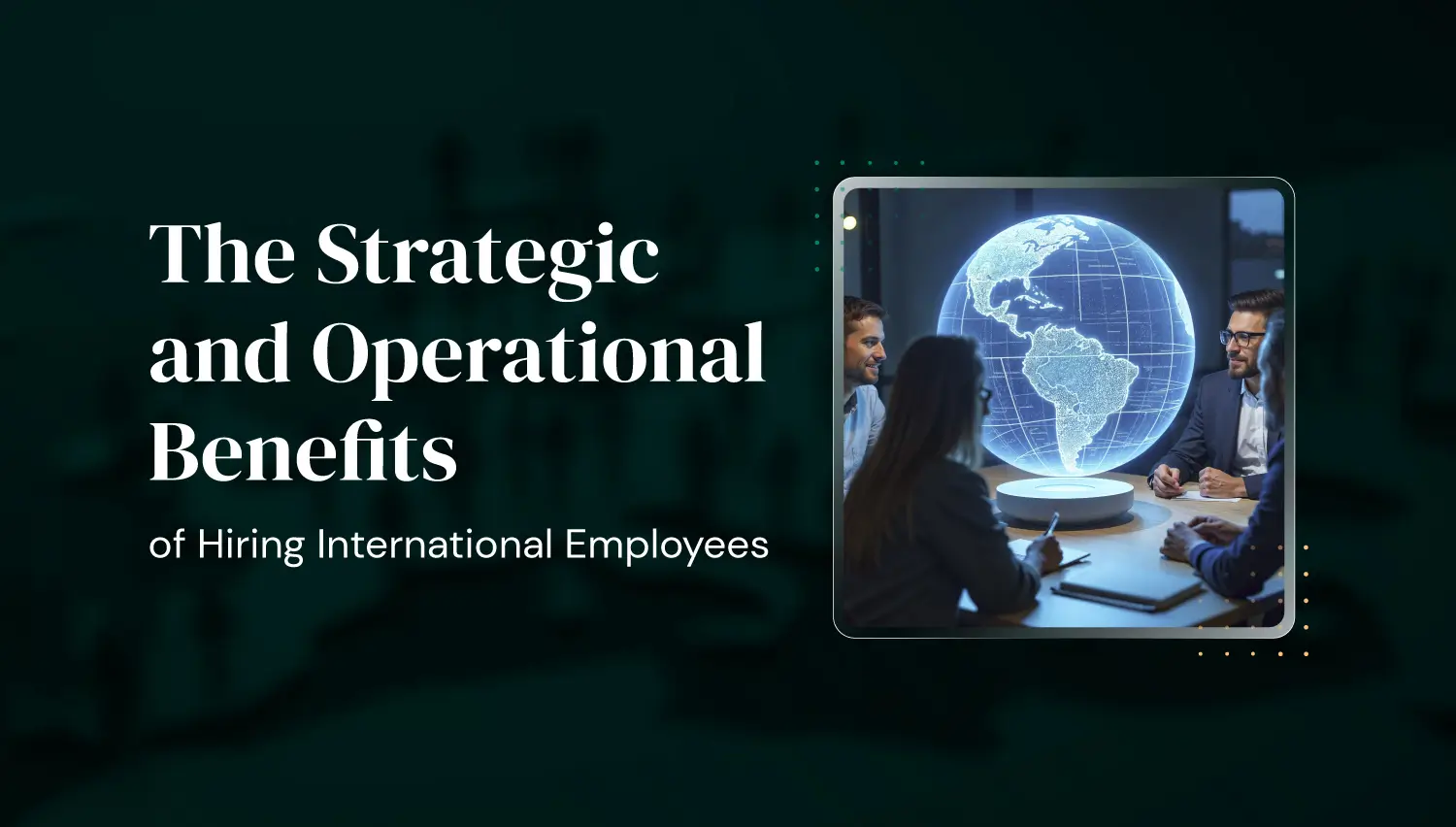A few years ago, I joined a panel interview for a senior operations role. We'd blocked an hour and prepped a page of questions, assuming we'd need most of it to get a clear read.
From the moment she walked in, calm, focused, I felt we could skip the warmup and get to the substance. I opened with a behavioral prompt I use early: "Tell me about a time you were thrown into a high‑pressure situation and had to deliver results quickly."
That question wasn't random; it mapped directly to a core competency for the role. Asking it upfront sets the tone, invites a concise STAR‑style answer, and keeps us out of vague claims.
Her response gave exactly what we needed: a real scenario, her role, the actions she owned, and the outcome in numbers. By the 20‑minute mark, we had credible evidence of problem-solving, cross‑functional leadership, and communication. The rest of the interview focused on values, decision style, and expectations because the must‑haves were already covered.
That conversation reminded me of a simple truth: great interviews aren't long; they're intentional. When you know what you're assessing and design questions to surface evidence, you reach confident decisions faster, reduce bias, and give candidates a fairer experience.
The Fast Answer: Here's How to Interview Someone, the Right Way
If you remember nothing else, remember this: a great interview isn't a casual chat; it's a structured assessment. The fastest route to an accurate hiring decision comes down to three pillars:
- Know exactly what you're assessing. Define the competencies and traits that directly link to success in the role.
- Ask interview questions that reveal evidence, not opinions. Behavioral questions (rooted in real past situations) are far more predictive than hypothetical ones. Asking the right time management interview questions will for example give you a very good clue as to how well someone can manage their task list.
- Keep it consistent. Use the same structure and criteria for every candidate so you can compare apples to apples, not apples to "I just had a good feeling."
Done well, this approach uncovers skills, decision-making patterns, and cultural fit without wasting time or letting bias creep in. You can use it whether you are doing a zoom interview or a one-on-one interview in person. In the next section, we'll get into why so many interviews fail, and what's at stake when they do.
Unstructured Interviews Are Costing You Good Hires
I've seen hiring teams lose great candidates simply because their interview process was built on casual conversation and "gut feel." The problem? Unstructured interviews are notoriously unreliable. Studies, including research from Google's People Operations team, have shown they're poor predictors of job performance compared to structured, competency-based approaches.
Without a clear framework, interviews tend to drift, questions vary wildly from candidate to candidate, and personal bias starts filling the gaps. That means you might be hiring people who "click" in the room rather than those who can truly perform in the role.
The stakes are high. A bad hire can drain resources, stall projects, and damage team morale. A missed great hire can mean losing out on innovation, speed, and competitive advantage. In short, interviewing well isn't just an HR function; it's a business-critical skill.
Next, we'll break down exactly how to run an interview that consistently surfaces the right hire.

How to Run an Interview That Predicts Performance
Start by getting crystal clear on the role's must-haves. This means more than rewriting the job description; it's about identifying the core competencies, behaviors, and outcomes that signal success. For example, if cross-functional collaboration is critical, decide what that looks like in practice and how you'll measure it in an interview.
Prepare with Intent, Not Assumptions
Before you step into the interview, know the candidate's background inside out. Review their resume, portfolio, and any pre-screen notes. Highlight specific experiences or gaps you want to explore. This preparation keeps the conversation focused and eliminates wasted time on generic questions they've answered elsewhere.
Use a Consistent Format Every Time
A repeatable structure is the backbone of fair and accurate interviewing. A reliable format might look like this:
- Welcome and rapport building (2-3 minutes)
- Role and process overview (2 minutes)
- Core competency questions (20-30 minutes)
- Candidate's questions (10 minutes)
- Closing and next steps (2-3 minutes)
Ask Behavioral Questions, Not Hypotheticals
When you ask, "Tell me about a time you…" you invite real examples that demonstrate how a person thinks, acts, and delivers. The STAR method (Situation, Task, Action, Result) is a proven framework to guide these answers and make them measurable.
Let the Candidate Interview You, Too
A veteran hiring manager I know starts every interview by asking candidates what they want to know about the role and company. It flips the dynamic, often revealing what they value most, and gives them a chance to engage on their terms before the traditional questioning begins.
How to Make Interviews Fairer and Smarter
A well-structured interview process isn't just about speed and predictability; it's about making sure every candidate is assessed on the same playing field. Fairness and intelligence in your process increase the odds of hiring the right person while protecting your company's reputation and reducing risk.
Prevent Bias with Scorecards
Scorecards turn subjective "vibes" into objective data. Build them around the exact competencies you've defined for the role, no more, no less. For example, if "problem-solving under pressure" is critical, your scorecard might include a 1–5 scale for that competency with clear descriptions for what each level looks like in real-world behavior.
Everyone on the hiring panel should complete their scorecard before the group discussion. This keeps individual impressions from being swayed by the loudest voice in the room and preserves the integrity of your evaluation.
Calibrate for Consistency Across Interviewers
Even with a scorecard, interpretations can vary wildly. One interviewer's "strong communicator" might be another's "average at best." The fix? Calibration sessions. Before interviews begin, gather your interviewers and run through the competencies, examples, and expected answers together.
For instance, role-play candidate responses and ask the group to score them. This reveals scoring discrepancies early and aligns expectations. The investment of one prep meeting can save you from weeks of back-and-forth after interviews.
Create a Better Candidate Experience
A fair process also needs to feel fair from the candidate's perspective. People remember how they were treated far more than the exact questions you asked. That means:
- Transparency: Let candidates know the steps, timelines, and what to expect in each stage.
- Respect: Start and end interviews on time, avoid unnecessary hoops, and give them space to speak without interruptions.
- Follow-up: Whether they move forward or not, provide a timely update. If possible, offer constructive feedback, especially for late-stage candidates. If you are conducting a second round of interviews, make sure not only to prepare the right follow-up interview questions, but also to notify your candidates of the date well in advance.
This approach pays off in two ways. First, you keep top talent engaged throughout the process. Second, even candidates you don't hire can become positive ambassadors for your brand, helping you attract stronger pipelines in the future.

Common Interview Mistakes and How to Prevent Them
1. Don't wing it. Structure beats intuition.
Relying on instinct feels natural, but it's one of the fastest ways to make inconsistent and biased hiring decisions. Without a clear framework, you risk overvaluing charisma or shared interests instead of actual job performance indicators. Structure forces you to evaluate candidates against the same yardstick.
2. Know what's off-limits legally and ethically.
Even experienced interviewers can slip into risky territory if they're not careful. Questions about age, family status, religion, or anything unrelated to job performance can open the door to legal challenges. Keep every question tied to the role and the competencies you've defined, and train all interviewers on compliance before they meet candidates.
3. Don't just "feel it". Follow the evidence.
It's easy to leave an interview convinced someone is a great fit because they seemed confident or likable. But unless you can point to specific examples that prove they can do the job, you're working off assumptions. Document evidence during the conversation, compare it against your scorecard, and make decisions grounded in fact, not feeling.
Get Expert Help to Build a Better Interview Process
A strong interview process doesn't happen by accident. It's built with intent, tested in the field, and refined until it consistently identifies the right people.
That's where Somewhere comes in. We help hiring teams move beyond unstructured conversations into interview systems that surface the truth about a candidate's capabilities. That means mapping role-specific competencies, creating structured scorecards, training interviewers on behavioral questioning, and building a candidate experience that keeps top talent engaged.
Whether you're filling one critical role or scaling a team, the right interview framework can prevent costly mis-hires, shorten your time-to-fill, and give you the confidence to make better decisions.
Use the form below to connect with Somewhere and start building an interview process that works every time. One that protects your time, respects your candidates, and delivers hires who truly fit.














